#wgss 2230
Explore tagged Tumblr posts
Text
Woman in Rap
There has always been a struggle when it comes to breaking through in the hip-hop world as a woman. The rap world is extremely male dominated, and many rappers have a tendency to demean and objectify woman in their music making female rappers very uncommon. Woman often have to prove themselves a lot more as they are doubted constantly along the way and often need to go above and beyond what a man can do,
Through the efforts of many hardworking woman rappers, it is much more common to see them around now then it was 30 years ago with rappers such as Megan thee Stallion, Cardi B and Nicki Minaj all being very relevant figures in today's Hip-Hop scene. But even now they still have a long way to go, it is still very common for rappers to put down woman in their songs and still be glorified for it by their audience. While woman are still picked apart and criticized for what they chose to rap about. The hypocrisy is clear and you can see this blatantly in Cardi B's recent song "WAP" which was torn apart by critics and rappers alike for being too vulgar and gross while many rappers talk about the same thing in songs but from a male perspective. Rappers who often talk about killing other gang members and using woman came out to say this song was inappropriate ignoring the violence and sex they preach in there music.
While the industry has improved a lot when it comes to the involvement in female rappers it is far from perfect and still has a long way to go.

Williams, A. (2020, December 21). Too Many Women Are Still Being Overlooked In Rap. UPROXX. https://uproxx.com/music/women-in-rap-2020/
Schmidt, E. (2013, October 8). The Objectification of Women and Misogyny in Hip Hop Music. WGSS 2230: https://wgss2230.wordpress.com/2013/10/08/the-objectification-of-women-and-misogyny-in-hip-hop-music/
Brown, N. (2021, January 9). Life and Hip-Hop: How women's role in the industry allows for empowerment, breaking norms. Daily Bruin. https://dailybruin.com/2020/11/12/life-and-hip-hop-how-womens-role-in-the-industry-allows-for-empowerment-breaking-norms
0 notes
Link
No matter where you look on the intarwebs, there’re plenty of ways that fans like to show their love for their particular fandom(s). (‘Cause let’s be real, guys. You can’t just have one fandom.) One of the newer ways is through “fandom tea,” or tea blends that are created in honor of various characters. These blends are usually then sold, usually using sites such as Adagio Teas.
One of the more popular blenders of these fandom teas is Cara McGee. (Tumblr url: areyoutryingtodeduceme) She (and her blends) have become so tumblr famous and made Adagio so much money that they’re pretty much couple status now. She owns pretty much ever type of tea that Adagio sells. She’s pretty cool beans. The link above is to her Adagio store.
37 notes
·
View notes
Video
youtube
This is VERY similar to the video about Purity Balls that we watched in class, but if you watch it all the way through I think you'll understand why the end is particularly troubling to me.
First of all, one man asks God in his prayer to "ignite fire in the hearts of fathers here tonight that they would take back territory stolen over the years." Do I need to say why discussing women, girls, as "territory" is problematic?
What really bothered me was the closing image of girls kissing their fathers. It's fucking creepy! My dad is 41, I'm 19 ( his girlfriend is 29, and we kind of look like sisters). We went furniture shopping not long ago, and people assumed we had just gotten married and were furnishing our new house. People put us at the romantic tables at restaurants. We once got upgraded to a honeymoon suite when we were in Boston on college visits. My situation is creepy enough WITHOUT me fake-marrying my dad and dancing the night away with him. NO KISSING!!! FUCKING EW.
26 notes
·
View notes
Text
Mini Media: Video Games and Sexism
Mortal Kombat is a game that I have actually learned to play! Mostly by button smashing, but it could hold my attention!
At first I loved Mortal Kombat. The violence is so over the top that it is super unrealistic and almost laugh worthy. In fact I do laugh a lot when I play it. The female characters are just as powerful and tough as the male characters. In fact I think there are some that are even better than the male characters. I love to play as Sheeva and smash everyone!
Then I started realizing what the female characters were wearing... or rather what they weren't wearing. Sindel is supposed to be an old lady, but this is what she looks like:

She has a few age lines around her mouth and forehead, but other than that she is perfectly smooth. And might I add that her boobs are quite round and perky for an old lady. And large... can't forget large. What is she wearing? some sort of armor that protects her nipples and a collar that is popped like a frat boy.
Here is Jade. In the older versions she was very dark skinned and had very African features.
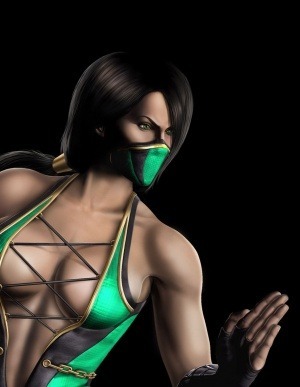
Jade skin has been severely lightened. She almost just looks like a really tan white girl. I'm almost positive my mom gets darker than that in the summer. She has a little fabric over her nipples and some strings holding it together that look like they could easily be snapped. Again her boobs are huge and it almost looks as if they moved her nipples to an anatomically impossible place just to show more of her boobs. Her face is also covered.

This is Jade in another part of the game. Man that girl has a donk! I think the only thing that prevents her from falling over is the fact that her giant boobs act as a counterweight.
Jade likes to pole dance for all of us in her torn clothing after she is victorious in a fight. Her heels really help enhance her legs and huge ass. They are also the key in helping her win fights and pole dance when she wins.

Sheeva is my favorite character! She is super muscular, has four arms, three fingers on each hand, half of her head is shaved, she has horns, and a kick that kills. Even being an extremely tough monster she has almost no clothes and even bigger boobs than we already saw.
This is the dance Sheeva does when she is victorious. She flexes and then massages herself. Don't those 4 arms, feet with 2 toes, and bald head turn you on?
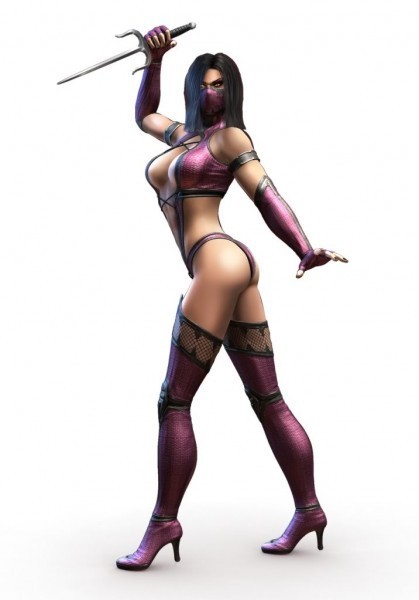
Mileena is next... she has these nice high heeled thigh high boots with fishnets, some sort of top thing that shows as much cleavage as possible, super thin revealing underwear, and again with the giant boobs.
It seems to me that in order to win you have to be more mature than the 13 year old boy, or his collage equivlant, that laughs and stares at the screen of bouncing boobs. The girls in this game seem more fitted for some sort of fantasy lingerie fashion show. Finally they created tough powerful female characters, but they still had to make them highly sexualized.
23 notes
·
View notes
Video
youtube
This is a clip of Killing Us Softly by Jean Kilbourne. In this clip Kilbourne speaks on the way the media has turned women into things, objects. An image of flawless beauty is ascribed to the audience and the image is seen as real when in fact the image is created. This type of persuasion is very toxic and confusing for a women or girl. On one had women are supposed to be sexual but stay a virgin and achievers but passive. A woman being an object can lead to the endorsement of rape culture. In many cases a the women is blamed for her attacker rapping her. She is an object and is thus less than human.
10 notes
·
View notes
Video
youtube
I was trolling on facebook, and I saw that my friend Meg had uploaded this, and I felt I needed to share it with the world...or at least the class via this relevant re-blog.
I don't even......ugh. What do you say to this?! I have no words, but a lot of lovely people who wrote reviews on Amazon do...so I'm just going to share a few of those with you.
"I love BIC Cristal for Her! The delicate shape and pretty pastel colors make it perfect for writing recipe cards, checks to my psychologist (I'm seeing him for a case of the hysterics), and tracking my monthly cycle. Obviously, I don't use it for vulgar endeavors like math or filling out a voter application, but BIC Cristal for Her is a lovely little writing utensil all the same. Ask your husband for some extra pocket money so you can buy one today!" -E. Bradley
"I see this comes in a sleek design. But as a "full-figured" woman, do these pens come in "curvy and carefree"?" - InTheRoses
"If I could count that high, I'd give this product SIX stars." - K. Gray
"When my daughter reaches puberty, along with a slap across the face to remind her of the pain of being a woman, she will receive her first BIC Cristal For Her Ball Pen. What better gift could I give her on her path to true femininity?" -Minkiemink
17 notes
·
View notes
Text
Harry Potter and Its Fantastical Influences on Hegemony
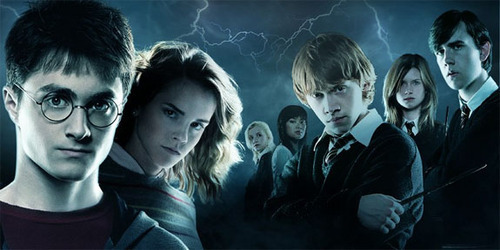
Harry Potter is worldwide phenomenon. It is a best-selling novel series in history and the highest-grossing film series of all time. In addition, Harry Potter also now has its own theme park at Universal Studios in Orlando, Florida. It has no doubt been a tremendous influence on pop culture and in particular, the people of my generation that have grown up at the same time as the characters. So how does this huge phenomenon affect hegemony and why is its effect on hegemony important?
James Lull’s article, Hegemony, states that hegemony is “the power or dominance that one social group holds over others.” Hegemony is what tells us what characteristics are the best and who controls the power for each of these characteristics. Media is the largest contributing factor to establishing hegemonic values. According to Douglas Kellner in his article, Cultural Studies, Multiculturalism, and Media Culture, “Media are forms of pedagogy that teach us how to be men and women. They show us how to dress, look, and consume; how to react to members of different social groups; how to be popular and successful and how to avoid failure; and how to conform to the dominant system of norms, values, practices, and institutions.” Because media is so influential to your ideals and actions, it is important to be conscious of the media you are consuming, especially as children. Harry Potter is a series specifically targeted at children and teens, therefore it is important to think about the ways in which it enforces and disrupts our current hegemonic views.
Point: How HP Enforces Hegemony
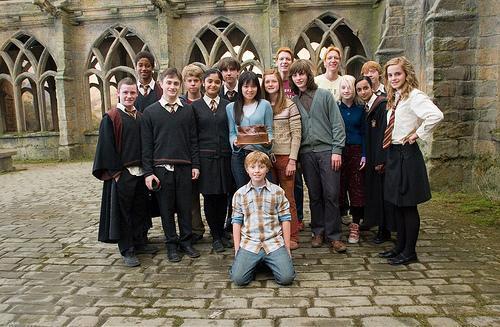
A variant in race is something that the Harry Potter series severely lacks. Almost all characters are white, middle class, and heterosexual. Readers are not even informed that there are any students that attend Hogwarts of African-American (African-British? I’m not sure what is politically correct here, obviously not American since they aren’t in, you know, America) descent until the third and fourth books. There are only a couple other races represented in the series embodied in Cho, who has an Asian heritage, and the Patel twins, who are of Indian descent. This reinforces Bell Hooks’ statement in The Oppositional Gaze that “mass media is a system of knowledge and power reproducing and maintaining white supremacy.”
Though race is quite underrepresented, the readers can still capture how difference affects the societal hierarchy. Because Harry Potter takes place in the wizarding world, naturally there are fantastical characters. Creatures such as giants (Grawp), half-giants (Hagrid), werewolves (Lupin), and even “mudbloods” (muggle-born wizards, Hermione) are considered the outcasts, so to speak, of society and are typically of lower class and looked down upon by most people. Wizards are the most acceptable thing to be and are highly respected in the wizarding world. Perhaps the only thing even more acceptable than being a wizard is being half-wizard, half-veela, seen in Fleur. Not only were they powerful, but they were also much more beautiful than any other creature. An example of “racism” (creaturism?) is seen in the first novel when Harry, Ron, and Hermione befriend Hagrid. Harry and Hermione grew up in the muggle world, where they had no prior connotations about any creature upon meeting Hagrid. However, Ron grew up in the wizarding world where his thoughts and feelings were influenced by the societal belief that giants were evil, low-life, dirty, dangerous, stupid individuals, therefore he initially reacts very poorly and in a “racist” manner towards Hagrid. Another example of radical racism can be seen in Voldemort’s extreme likeness to Hitler. Hitler strove to create the perfect Aryan race, and took to genocide in order to do this. Ironically, Hitler resembled nothing of the Aryan race. Like Hitler, Voldemort also wanted to create the perfect race (one of pure-blood wizards), was willing to kill whoever he needed to, and hypocritically (just like Hitler) he did not resemble the race he wanted to create and was only a half-blood. (I could go on and on about Voldemort and Hitler… In my freshman year of high school I wrote a 15 page paper comparing the two and the story line of Harry Potter to the holocaust.)
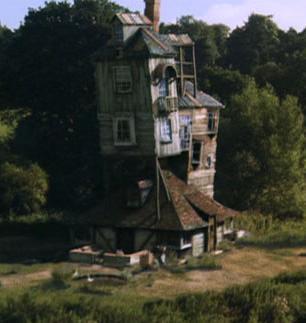

The typical social construct that favors those with wealth can be seen with even the most respected “race,” the pure-blood wizards. Ron comes from a pure-blood family; however, his family is very poor. He wears second hand clothes, his dress robes he wore to the Yule Ball were very old hand-me-downs that kind of made him look like a clown, and his family’s house is not the best (it looks like it belongs in a Dr. Seuss book or it could be the house in Willy Wonka without holes in the roof). Ron’s dad has a job he loves, but is considered “laughable” by the rest of society. At the other end of the spectrum are the Malfoys who live in a “manor” with a large gate and peacocks that roam. Malfoy’s dad is highly respected by most and his opinions are sought after by the Ministry of Magic. Another example of how wealth affects one’s value can be seen in the house elves. House elves are extremely impoverished; they cannot even afford and are not permitted to wear clothes. They are literally slaves and have been enslaved for so long that they are afraid to be freed because they do not know what to do as free elves. One factor that should be pointed out is that a characters’ “race” (type of creature) is almost always the direct causation of the characters’ class status. Most creatures, if any other than wizards, cannot possess physical money and therefore cannot purchase anything. Some are quite literally enslaved and cannot physically escape slavery due to magical law. Goblins have the ability to make and keep things of value; however most of their objects they create are taken from them by wizards. There is some variance within the different “races,” the Weasley’s and the Malfoy’s for example, or Dobby who is a free elf that wears articles of clothes and some awesome boots and Kreacher, Harry’s house elf that was passed on to him by Sirius that is still enslaved and lives in a closet under the stairs. The connection can be linked to the class structure in our society because of race. For instance, African-Americans are typically of a lower class in comparison to white people.

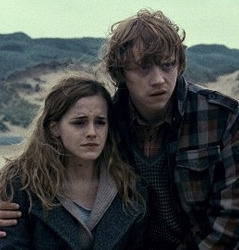
Though it is a popular rumor that Dumbledore was gay and that is why he took particular interest in Harry, there are no indications in any of the literature or movies to suggest this fact. Actually, there are no sexualities expressed in the entire series other than heterosexism. Heterosexism happens to be a strong driving force in the series. Almost all characters talk about their mom and dad, and by the end all of the characters that grew up throughout the books end up having a “traditional” heterosexual marriage. There are also marriages throughout the series, such as Lupin and Tonks. There are no discriminatory remarks made in any way towards a different sexuality, they are just not mentioned in even the slightest way, almost as if they do not exist.
The Harry Potter series also enforces the hegemonic ideals of gender roles. According to Patricia Hill Collins in her article, It’s All in the Family, “women’s roles are defined as primarily in the home and men’s in the public world of work.” Almost every important character is male, Harry, Ron, Dumbledore, Voldemort, ect. Even within the death eaters there is only one some-what important female character, Bellatrix. Most of the lesser important, but most annoying characters are all female, Rita Skeeter, Umbridge, Aunt Petunia. Most, if not all, of the positions of power, Headmaster, Minister of Magic, aurors, and other political positions, are predominately held by male characters. In addition to having a higher representation, the males in Harry Potter are characterized to be braver, wiser, more powerful, and more fun than the female characters. The women in the series are always performing domestic tasks for everyone. Mrs. Weasley, for example, is always seen taking care of her children, cooking, knitting, cleaning, fixing things around the house, ect. The female professors at Hogwarts teach the much more passive subjects, such as Muggle Studies, Transfiguration, Divination, and Herbology, rather than, say, Defense Against the Dark Arts or Potions. The nurse/healer at Hogwarts is also a woman. The men on the other hand are the leaders (Harry, Dumbledore, and Voldemort), seen working all the time (Mr. Weasley is always coming back from work whenever he is mentioned), and hold all offices of political power. Female characters always need to be saved, i.e. Ginny in the Chamber of Secrets. The female characters are always shown as “girly girls.” Even when females are put in positions of action girls are given the typical girly stereotype, such as on the Quidditch team when they play Cedric’s team, all of the girls just giggle and oodle over how attractive Cedric is. The roles of the female and male characters fall perfectly in line with our hegemonic views because they exemplify the qualities in which our society assumes makes an individual masculine or feminine.
Though it may be difficult to see, the Harry Potter series supports many hegemonic ideals. Because this story takes place in a fantastical world, it is important to look at things differently than you would analyze most media. The way race, class, and sexuality are represented throughout the Harry Potter series all serve to reinforce the hegemonic views of society. There is a theme of white supremacy in terms of characters’ actual race, or wizard supremacy in terms of the type of creature the character is. The wealthy hold the power throughout the series, regardless of the type of creature an individual is, though the two go hand-in-hand for the most part (Intersectionality!). Finally, heterosexism is the only option of sexuality for the characters to have, it is not just considered the correct sexuality, it is the only sexuality. The strong heterosexual stance throughout the novels supports the hegemonic tendencies towards homophobia. In addition, gender roles are slightly different. Women in our society are not charming things to knit themselves, teaching students how to magically transfigure things into something else, or planning how to free all of Hogwarts’ house elves, however, the characteristics and qualities required to perform these tasks in the wizarding world are exactly the same. The women must be compassionate, domestic, and passive. Though not identical to our society, Harry Potter enforces many of our hegemonic views.
Counterpoint: How HP Disrupts Hegemony
Harry Potter is not all bad. In fact, it takes many hegemonic connotations and completely tosses them out of a window. There are many examples of occurrences in the series that disrupt hegemony.
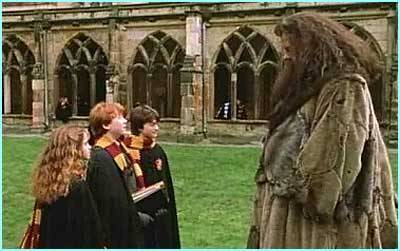
Take the socially constructed racial hierarchy, for example. When Ron reacted in a “racist” manner toward Hagrid, Harry and Hermione stuck up for Hagrid and forced Ron to see Hagrid as he is as a person, not just a half-giant. They explained to Ron that his negative attitude towards Hagrid was completely uncalled for and that his discriminatory views were morally wrong. There was also Hermione’s fight to free all of the house elves at Hogwarts. Hermione stood up for the elves’ rights and tried to explain to others that the treatment of house elves is horribly unethical. Finally, there is the simple fact that Voldemort and his actions and opinions about creating a pure race are the root of evil happenings in the novels. Voldemort and his racism are framed as the “bad guys” in the story and the characters that are the most highly respected, morally speaking, are against Voldemort. As you can see, there are many examples of people fighting back against the hegemonic ideals of race and showing the reader that these ideals are degrade many individuals.



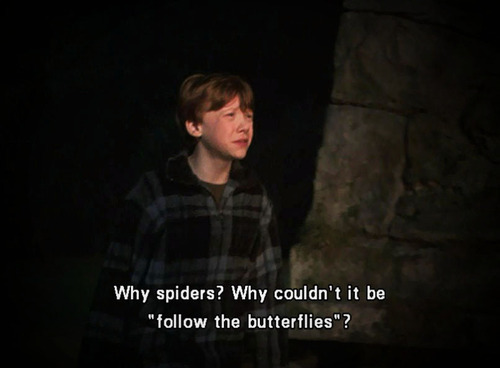
The Harry Potter series also disrupts the societal image of masculinity. Jackson Katz’s, Tough Guise, explains how men in our society are expected to put on the “tough guise,” or show characteristics of power, control, violence, and dominance, in order to be considered masculine. Another part of the “tough guise” is that men are not to show any sort of emotion. Throughout every book and movie we see Harry, who is supposed to be the man everyone looks up to, show a wide variety of emotion. There are several occasions that we see Harry cry. Harry is always very compassionate and kind, putting other before himself. For example, in Harry Potter and the Deathly Hallows, Dobby’s death brings great distress to Harry and he does indeed cry. Harry takes the time to dig Dobby’s grave by hand, not with magic, which was a HUGE sign of respect for the house elf, one that may have never been seen in another wizard or other magical creature. The hegemonic barriers that were broken down with that one action both in the views of race and masculinity are some that may have never even been attempted to disrupt by an individual. Harry is also never violent and extremely dislikes using any spells that will harm another being. Even when people were attempting to murder him Harry refused to use offensive spells; he preferred to disarm the attacker instead. We also get to see the enormous love Snape, who was supposed to be a cold, dark, untrusted, very masculine wizard, felt for Lilly Potter and the unhealing sadness he felt when she was murdered and the tears he shed. Dumbledore, the most respected wizard (perhaps of all time), is seen showing his emotions and the occasional tear. Male characters also frequently show fear, which according to the “tough guise” is considered unmasculine. There is Ron who is terrified of spiders and blatantly states it many times (or yells it depending on the situation). When forced to go into the forbidden forest and talk to the spiders in order to get answers and potentially free Hagrid from Azkaban in Harry Potter and the Chamber of Secrets, Ron openly shows his fear with his clamy hands, shaking, sweating, high pitched girly sounding screams, and repeatedly saying “I don’t like spiders…” Later in that same book we see Professor Lockhart, a man that is sooo “dreamy” and all the girls want, try to bail in terror when he is told he needs to rescue Ginny from the Chamber of Secrets and then faint when Ron and Harry force him down into the chamber. Not only do the female characters travel in packs, a typical girl stereotype, this same trait can be found in the male characters. The boys are often times seen together in groups, (i.e. Malfoy, Crabb, and Goyle or James, Sirius, and Lupin) a concept that is not considered masculine because it would ruin the sense of independence that is associated with masculinity. Finally, the characters that are considered to be “good” are never shown using violence unless it is absolutely necessary. Those that support and do use violence are the death eaters and are illustrated in a very negative light.

In addition to disrupting the ideal image of masculinity, Harry Potter also disrupts the hegemonic view of femininity. The best example of this is Ginny Weasley. At the beginning of the series she is depicted as the ideal girl, extremely passive, weak, and receptive. For a while she could not even speak in the presence of Harry, totally overwhelmed by her crush on him. This changes as Ginny grows and matures. She uses her experience of being possessed by Voldemort to offer Harry advice, showing her maturity, and has the courage to call Harry out on his stupid actions. Ginny is no longer afraid to speak in front of Harry and is one of the only people that will call him out on his faults and stand up to him. When Harry is banned from playing Quidditch, Ginny successfully takes his place as seeker, a very masculine position (almost every single seeker is male and the seeker is powerful- they have the ability to score the most points in the game). Ginny also shows her immense strength and courage. Ginny is the only female character that does not fear Lord Voldemort’s name and very openly uses it, rather than saying He-Who-Must-Not-Be-Named. Hermione also does not follow the traditional image of femininity. She is the brains of the entire operation. Hermione’s intelligence is of an unparalleled level, something that is not normally seen in a female character. Without Hermione, Harry and Ron would be clueless and most of what they did would not have been possible. It is usually the lead male character that embodies intelligence. In addition, females are introduced to some positions of power. For instance, Umbridge was temporarily the Headmaster of Hogwarts and she was the undersecretary for the Minister of Magic and Tonks was a female auror. Consumerism is a quality that is always associated with women and femininity. In Harry Potter, however, consumption is not very important. People buy the things they need, such as clothes and books, but they never buy things to have them or have much interest in fashion.
The series also abolishes the hegemonic view of the traditional family. Though there are some traditional families, such as the Weasleys, but the concept of family is not based on blood relation as it is in our society. From a young age, the wizards are sorted into houses and it is the people in these separate houses that they live with almost all year, create emotional ties to, and consider family. They also bring into their family people that they become close with and count on for support. For example, Harry did not consider his aunt and uncle to be part of his family, but his close friends, other students of Gryffindor house, parts of Ron’s family, and his father’s friend Sirius are whom he considered to be his family. Harry was not related to the Weasleys in any way, however Ron’s family was very accepting of him as their own and Harry embraced them back. It is also a norm to just turn your back on your blood relatives. Sirius did it to his family and Malfoy did it for part of the seventh book as well after Harry saved his life. Harry also joined Lupin and Tonks' family when he became the godfather of their son. Families in the wizarding world are far from normal and can include nearly anybody regardless of blood relation.
The Harry Potter series does in fact disrupt hegemony in many ways. It is pointed out that racism is immoral and some characters take action against it. The ideal image of masculinity is challenged with the displays of emotion and fear shown by many male characters. The hegemonic view of femininity is also torn down by the illustration of Ginny’s maturity, courage, and strength, Hermione’s intelligence, and the lack of consumerism within the series. Harry Potter does indeed take a strong stance against hegemony.
It is important to consider every piece of media that you consume. The Harry Potter series has been around for the most influential parts of my life and the views, attitudes, and opinions expressed in a piece of media that has been a huge part of pop culture for most of my life can have an enormous impact on the ways that I (and others) view society and the people in it.
#wgss 2230#final project#feminism#pop culture#harry potter#hegemony#race#class#sexuality#point#counterpoint#disrupting hegemony#enforcing hegemony#gender roles#femininity#masculinity#family
7 notes
·
View notes
Text
Analysis Post- Claiming Sexuality
If you’ve read the book, Fifty Shades of Grey, did you ever pick it up and read it in public? If you have, I bet you caught yourself glancing up periodically to see if anyone just saw you read that. Fifty Shades of Grey is one of the first opportunities, as of lately, for women to claim their sexuality. This book contains all the sexual desires and fantasies that women aren’t familiar with talking openly about and it makes us feel uncomfortable because we just aren’t used to it. Society has embedded the message that women aren’t allowed to be sexual beings and that when they do have sexual desires than they certainly are not supposed to talk about it. In grade school and middle school our sexual education is very minimal and abstinence is always stressed. And now we have a book that women of all ages are reading where the main female character is demanding sex and actively participating in role-play and other fetishes. This book contradicts anything and everything we’ve ever learned about our sexuality.
Fifty Shades of Grey is popular among all age groups. The younger women (20-30 year olds) enjoy this book because their bodies get policed on a daily basis. They are told what kind of clothes to wear, what their physical appearance should be like, how to act around men, and even control over their own bodies that is lost when they’re drunk. This is a targeted age group for the media so the 20-30 year olds definitely feel the pressure of the society. This book is an outlet for these women because nobody is controlling their bodies in this text. They can make a connection with Anastasia and not get “punished” for wanting the same sexual desires as the character in the book. It also communicates positive desires for sex, instead of being told by society that women should not have these desires. The older age group (40-50+ year olds) gets a different thrill from Fifty Shades of Grey. Women in their 40s and 50s are not longer considered to be sexy. We kind of just write them off and don’t consider them to be sexual beings anymore. If women weren’t allowed to talk about their sexual desires before, than they REALLY can’t talk about them now. This book provides a safe space for this specific group of people because it allows them to have an open dialogue about sex and erotica between their friends and even partners. Come on, they’re still human beings…maybe oldones, but human beings nonetheless and these women still have the desire to have sex.
In a bigger sense, Fifty Shades of Grey is a great breakthrough in society. It pushes back against the norms of society that restrict women from having open desires for sex. Sex is not some new thing that people are JUST NOW taking an interest in. This book just put on paper what everyone has already been thinking since the Adam and Eve days. Hopefully the popularity of Fifty Shades is a good indication of what is in store to come in the future. Women need more opportunities to express themselves, especially in terms of sexuality, instead of being forbidden to have these dirty thoughts. I hope that one day I won’t be reading a book like this on an airplane and try to cover up the words because I am worried about what the guy next to me might think. I hope that Fifty Shades of Grey leads to more of a social acceptance when it comes to open sexuality so that I won’t have to feel uncomfortable.
5 notes
·
View notes
Text
F**K Barbie!
When I was younger, I found myself wondering why Toys R Us had the girls section all pink and the boys section was every color but pink. Also when my cousin and me would play with my Barbie’s , older adults asked questions and made fun of him, yes him! We would find ourselves defending our reasons. To us they were just toys, toys. Now I understand why people are mad, they follow gender stereotypes. Toys sell us more than just entertainment; they sell us dreams, roles, ideas, fantasies and preferences. “Girls” toys evolve around nurturing, how to cook, glamour and fashion just to name a few. “Boys” toys involve action, problem solving, imagination and competition. They also sell us sex and relationships which are mostly heterosexual but I do believe that all toy advertisements in the United States sell only heterosexual partnership. This is problematic because there are fewer women high paying jobs. Women in the work force are still paid less than men and also have the pressure of choosing only a career or a family. And this idea is playing out in toys; the doll is either glamorous or fabulous with a boyfriend or has a career with no family. These ideas are being reinforced at an early age and instilled in not just girls but boys as well.
http://pics.blameitonthevoices.com/052010/boy_toys_vs_girl_toys.jpg
This comic says it all!!! If we train women to think only the possible how is the impossible supposed to happen?
" Oppression only continues in a society because the oppression has been internalized." A feminist of whom i forgot her name.
The beautiful girl aisle:
http://poshnicki.files.wordpress.com/2011/12/my-trip-to-the-toy-aisle-girls1.jpg
The awesome boys aisle:
http://2.bp.blogspot.com/-yd1m3IXUzGw/TVxg_JW-JBI/AAAAAAAAQlY/rr3FUcjs5eo/s1600/IMAG0139.jpg
Advertising literacy is needed for parents and children in order to stop gender stereotypes. One day I want children to feel that they can play with whatever toy they feel is entertaining.
Check out Feminist Frequency: http://www.feministfrequency.com/2010/11/toy-ads-and-learning-gender/
7 notes
·
View notes
Text
My cup overfloweth with videogame links
Note: The ones you need to read/watch for class are clearly marked with HOMEWORK next to them. The others are because this topic is amazing and you should read more into it.
Understanding videogames and gaming culture can be roughly broken into its those two components, so here are some links relating to each section.
On Games:
Those icky times where you're supposed to fetishize a female character's body before you kill her
The Damsel in Distress trope in videogames and how it came to be HOMEWORK
Lady characters get pretty bad wardrobes in games
Whitewashing in videogames is most certainly a thing
Pretty much everything wrong with videogames' current portrayal of race, gender and sexuality in 5 easy points HOMEWORK
World's most awesome dads hack Zelda and Donkey Kong, win all the awards
Just what we needed: games aimed at preteen girls that encourage them to be interested in fashion, celebrity, and babysitting (natch)
Call of Juarez: The Cartel might be the most racist game ever
On Gaming Culture:
Lady gamers get sexually harassed. A lot HOMEWORK
The industry is (finally!) becoming more attuned to issues of race, gender and sexuality in games
The everyday sexism female game developers face HOMEWORK
Male developers see the need for a culture change too
Modern gaming is really violent. Let's talk about it
When talking about Tomb Raider, it's important to note that Lara Croft has boobs
It's not cool to be a gamer when the industry presumes you have the maturity of a 14-year-old boy
This is really just a small starter sample of all the wonderful articles out there on games and gaming. If you want more, or are interested in a specific part of gaming, shoot me an ask and I'll direct you where I can! Or have a vibrant and lively discussion with you on the subject. Or both.
5 notes
·
View notes
Text
Pregnancy and Purity Q and A Post
What does the phrase “policing young women’s sexuality” mean? How does this policing happen?
The phrase “policing young women’s sexuality” means that it is our God given duty as parents (but mostly fathers) to shield our daughters purity and ensure that she remains a virgin until she is married. Or she will get an STD. Or die. Instead of encouraging young girls to ask questions openly about sex and educating them on the consequences of pre-marital sex, we have made discussing sex like opening Pandora’s box. The argument most conservatives have against discussing sexual activity with young people is that they believe it is encouraging them to have sex. One of the ways we see this policing in action is the surge of purity balls. Purity balls are usually extravagant events in which daughters as young as eight years of age pledge their virginity to their fathers until marriage. Their fathers are there to promise to protect their fragile little angel’s purity. The entire idea is comical in my opinion. To ignore science and deprive young adults of factual information regarding their bodies is selfish of their parents in my opinion. Utilizing scare tactics opposed to education is ignorance and to do it behind the shield of Christianity is even more disturbing.

5 notes
·
View notes
Video
youtube
4 notes
·
View notes
Video
youtube
Adam Falkner's "The Definition of Privilege"
Privilege is the option of silence.
5 notes
·
View notes
Text
Relevant ReBlog #1- Toddlers and Tiaras

Toddlers in Tiaras is a show about mothers who put their little girls in pageants and encourage them to compete against each other in all areas of what is considered to be beautiful and girly. This show is very problematic for obvious reasons which are pointed out in the picture above. Not only are we physically changing the girls looks, we are teaching them that it is IMPORTANT to look this way and to act a certain way to be considered beautiful and to win. It is even more problematic that their own mothers force them to do this, because most little girls do not have the attention span nor do they have the desire to compete in these completions the entire time that it takes to complete the process from start to finish. These usually last several weeks if not months and they do extensive preparation. When do these little girls have the time to be what they are, little girls?? And are they really old enough to decide for themselves that this is what they want to spend their childhood doing, or is it the mothers living vicariously through them??
4 notes
·
View notes
Video
youtube
Megara is by far my favorite Disney not-quite-princess. She's so sassy! She's making fun of everyone and her line at the end of the clip..."I'll be alright. I'm a big tough girl, I tie my own sandals and everything. Bye-bye Wonderboy." Genius!!!
Furthermore, her biggest song in the movie is "I won't say I'm in love." That's such an different message compared to what the other princesses are saying. I mean Snow White's song "Someday My Prince Will Come"!? We've definitely made some progress.
Side note: I find it funny that my favorite character comes from the movie that Disney considered a flop. Typical Ky.
4 notes
·
View notes
Text
The Cock Rockin' Kings of Hegemony: How the film Magic Mike enforces hegemony (Point)

Ladies and gentleman, do I have your attention now?
http://magicmikemovie.warnerbros.com/dvd/#
While Magic Mike is a movie that is a first of its kind in many ways, it can’t seem to escape some of the most prevalent ideas of hegemony. Some of these ideas that the film enforces is that of the “tough guise” and super ripped “masculine” body type, ideas of women’s inferiority, ideas of white supremacy, and ideas of heterosexual superiority.
There’s no doubt that much of the reason there was so much buzz surrounding Magic Mike is because it (supposedly) flips expected (and widely accepted) hegemonic gender roles. Men’s bodies are the ones on display for consumption instead of women’s bodies. The sole value of the men of “Cock Rockin’ Kings of Tampa” is found in their bodies. While many women’s reactions may include an exaltation of “finally!” it doesn’t prove that this is necessarily a positive thing. A much propagated stereotype of the aims of feminism is that feminists would like to “payback” all the “evil” that men have done to us by becoming the sex with the “power.” This misconception is what often holds back progress for feminists. It creates fear and a pushback of power by the hegemonic purveyors. The aim of feminism is equality, simply put as that. Magic Mike may help to cultivate a further belief in the stereotype. The fact is that objectifying anyone’s bodies won’t help us in the long run.
Magic Mike objectifies a very specific type of male body. Just as women are expected to fit a mostly unrealistic notion of beauty and body shape, these strippers are required to as well. A hegemonically “hot” man is supposed to be extremely physically fit in a way that shows. This means ripped arms, perfect washboard abs, and of course a butt that can fill out those ass-less chaps. Problematic hegemonic notions are tied to this ideal male body image. This body type conveys power. Physical power, and physical power over women. If you don’t have this physical power, you are seen as less of a man, more “feminine,” and heaven forbid you be anything like those lesser women! This image plays into the problematic “tough guise.” This body type perfectly emanates the mask, or guise, men are expected to put on to prove they are a true man that is capable of violence, dominant, powerful, and controlling. Praising this body type and what it currently represents, and implying it is what is most desirable, just leads us right back into a circle of power for men, subservience for women: the most basic of hegemonic notions.
According to Daniel Agliata and Stacey Tantleff-Dunn in their article “The Impact of Media Exposure on Males’ Body Image,” this isn’t doing anything great for men either. As the muscles get bigger and bigger and more and more unattainable in things like Playgirl, action figures, and movies like Magic Mike, self-confidence decreases and depression rates increase in men.
The strippers in Magic Mike are portrayed as stripping to support themselves, a common storyline for female strippers. Yet, we really don’t get the same vibes. Women are considered whores, tainted, if they use their body and sexuality to get what they want. The story is often centered on them getting out of this supposed degrading profession. For the “Cock Rockin’ Kings of Tampa” they’re not considered bad people for using their sexuality to earn money. It’s considered a bit “odd” or “funny,” but they are not considered disgusting or on the outskirts of society. When they are on stage women are portrayed to fall over their own hormones for them. They are not berated with names like “slut” and “bitch.” When Dallas is teaching Adam how to dance, to boost his confidence, he reminds Adam that he is “the one with the dick,” aka the one with the power over these women. This propagates the classic hegemonic double standard of sexuality. Men are expected and encouraged to explore their sexuality and “spread their seed” if you will, as much as they wish. Women are expected to maintain their purity. The general reaction to these men’s profession throughout the movie concedes to this hegemonic value.
The racial representations in the movie also support the hegemonic value of white supremacy. All the strippers (and pretty much every other character in the movie) is white. This particular movie takes it one step further because it is very blatantly supposed to be displaying what type of race is physically appealing as well. We do get one man of color in the Latino Tobias. However, this character is not one of the idealized strippers, and he is also the character that gets the new kid, Adam, involved in a drug ring and addicted to those same drugs. Apparently, they couldn’t even get creative with their racism.
Lastly, while it is true, as Rachael points out, that a queer reading can be had on the media, in its most basic form it enforces ideas of hegemonic heteronormativity. The strippers are on display for only women, and none are explicitly gay. Women are supposed to be attracted to these males, and only these types of manly men. This excludes men that could be coming to the strip club to enjoy these men. It also excludes women that are attracted to other women. It markets this heterosexuality as the right and glamorous one. Kathleen Battles and Wendy Hilton-Morrow point out in their article “Gay Characters in Conventional Spaces: Will and Grace and the Situation Comedy Genre” that visibility of homosexuality in media represents an acceptance of homosexuality in reality. With our current hegemonic structures this is just simply not the case, therefore homosexuality is found far more implicitly than explicitly in this film.
You may be thinking “dear god, just let me enjoy the movie!” but as Greg Smith points out in his article “It’s Just a Movie,” once you are able to analyze pop culture and realize the power structures at play, and why you may like something, you come to have a much deeper enjoyment of certain quality media (and can start kicking out the crap.) If we continue to be ignorant of the many damaging and restricting power structures at play, they will continue to be the dominant forces in our society reinforced through our pop culture.
For the complete point/counterpoint analysis on how the film Magic Mike interacts with hegemony, please visit Rachael Denholm's blog and read “The Cock Rockin' Kings of Feminism: How the film Magic Mike disrupts hegemony (Counterpoint)”
3 notes
·
View notes